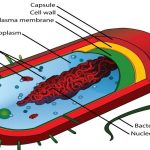The cell cycle is the life cycle of a cell. During this cycle, it grows and divides. Checkpoints exist between all stages so that proteins can determine whether the cell is ready to begin the next phase of the cycle.
Quiescence (G0)
Quiescence, also known as senescence or resting, is a phase in which the cell is not actively dividing. It is also known as Gap 0, or G0. This stage is considered the start of the cell cycle, although it is one that cells can reach and then stop dividing indefinitely, which ends the cell cycle. Liver, stomach, kidney cells, and neuron are all examples of cells that can reach this stage and remain in it for long periods of time. It can also occur when a cell’s DNA is damaged. However, most cells do not go into the G0 stage at all, and can divide indefinitely throughout the life of an organism.
Interphase
In interphase, the cell grows and takes in nutrients in preparation for division. Interphase takes up about 90 percent of the cell cycle. It consists of three parts: Gap 1, Synthesis, and Gap 2.
- Gap 1 (G1) is also known as a growth phase. The cell gets larger and increases its stock of proteins, along with organelles such as the energy-producing mitochondria.
- Synthesis (S) is the phase in which DNA replicates. During synthesis, the chromosomes replicate so that each chromosome is made up of two sister chromatids. At the end of this phase, there is double the amount of DNA in the cell.
- Gap 2 (G2) is another growth phase. The cell becomes even larger in order to prepare for mitotic division.
Mitosis (M)
Mitosis, or M phase, is when the cell begins to organize its duplicated DNA for separation into two daughter cells. The chromosomes separate so that one of each chromosome goes into each daughter cell. This results in the daughter cells having identical chromosomes to the parent cell. Mitosis itself is divided into prophase, metaphase, anaphase, and telophase, which mark various points in the DNA separation process. Mitosis is then followed by a process called cytokinesis, during which the cell separates its nuclei and other organelles in preparation for division and then physically divides into two cells.
Examples of Eukaryotic Cells
Plant Cells
Plant cells are unique among eukaryotic cells for several reasons. They have reinforced, relatively thick cell walls that are made mostly of cellulose and help maintain structural support in the plant. Each plant cell has a large vacuole in the center that allows it to maintain turgor pressure, which is pressure from having a lot of water in the cell and helps keep the plant upright. Plant cells also contain organelles called chloroplasts which contain the molecule chlorophyll. This important molecule is used in the process of photosynthesis, which is when a plant makes its own energy from sunlight, carbon dioxide, and water.
Fungal Cells
Like plant cells, fungal cells also have a cell wall, but their cell wall is made of chitin (the same substance found in insect exoskeletons). Some fungi have septa, which are holes that allow organelles and cytoplasm to pass between them. This makes the boundaries between different cells less clear.
Animal Cells
Animal cells do not have cell walls. Instead, they have only a plasma membrane. The lack of a cell wall allows animal cells to form many different shapes, and allows for the processes of phagocytosis “cell eating” and pinocytosis “cell drinking” to occur. Animal cells differ from plant cells in that they do not have chloroplasts and have smaller vacuoles instead of a large central vacuole.
Protozoa
Protozoa are eukaryotic organisms that consist of a single cell. They can move around and eat, and they digest food in vacuoles. Some protozoa have many cilia, which are small “arms” that allow them to move around. Some also have a thin layer called a pellicle, which provides support to the cell membrane.


